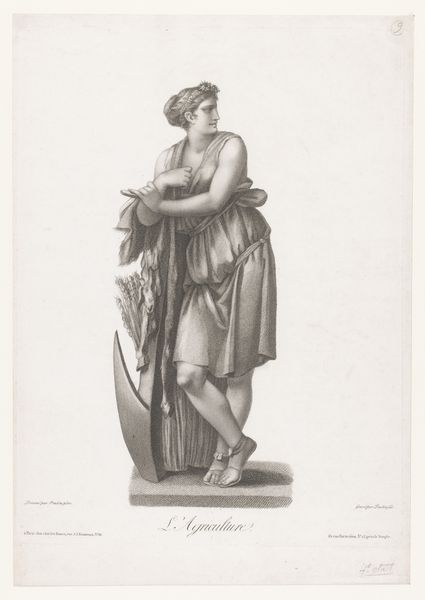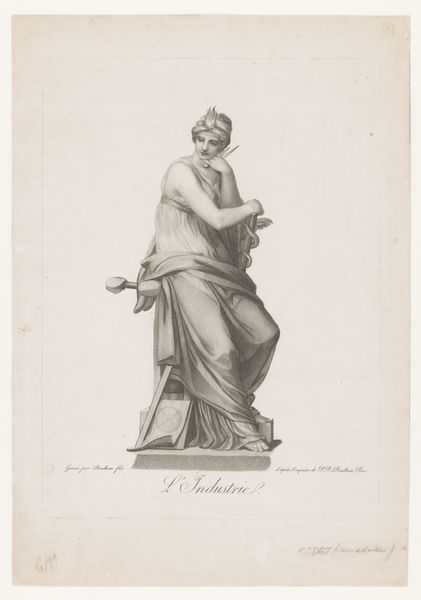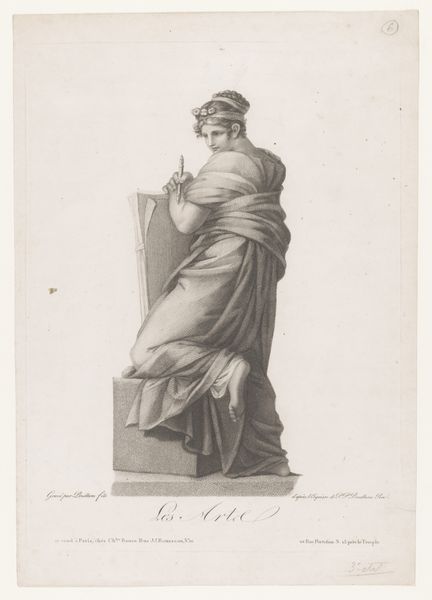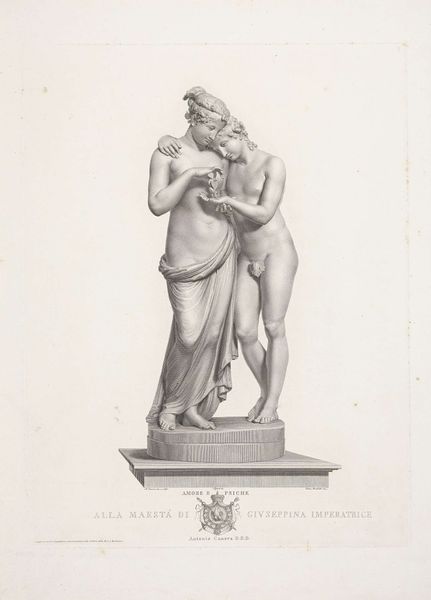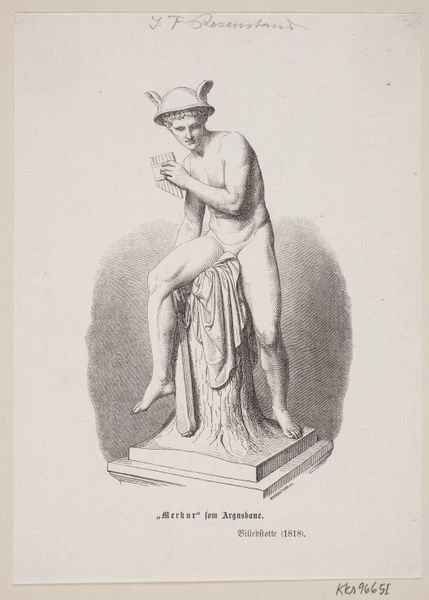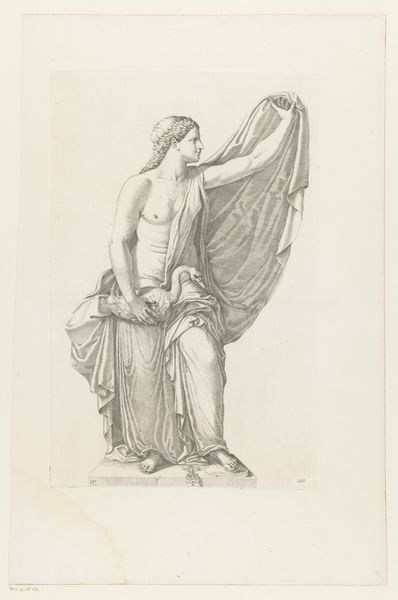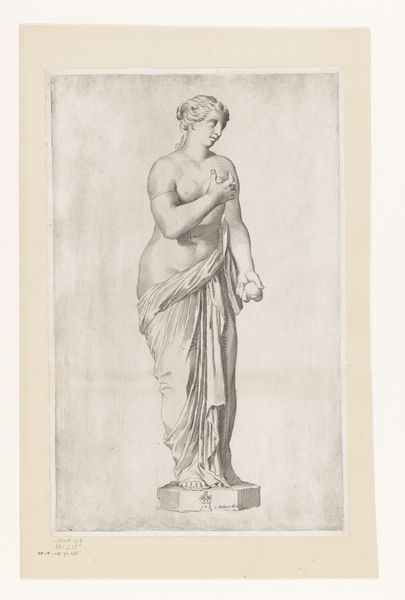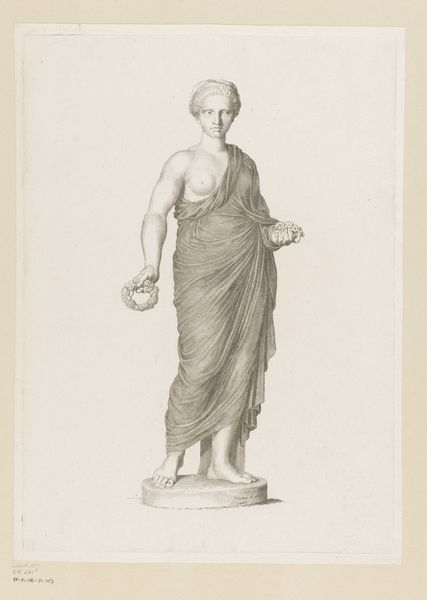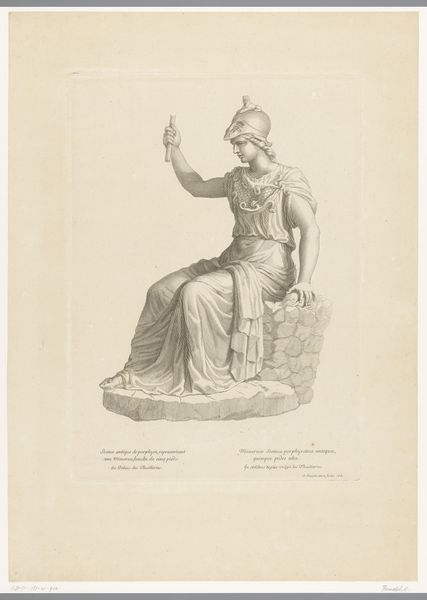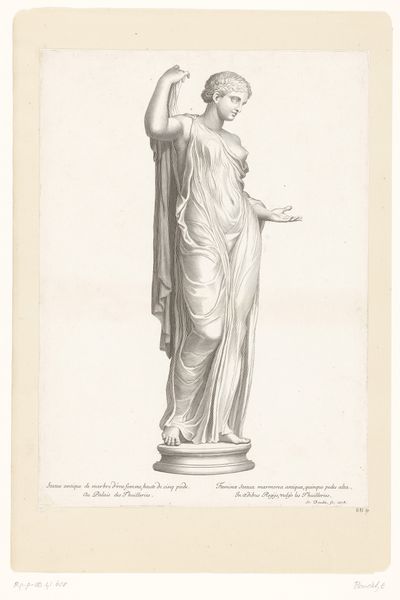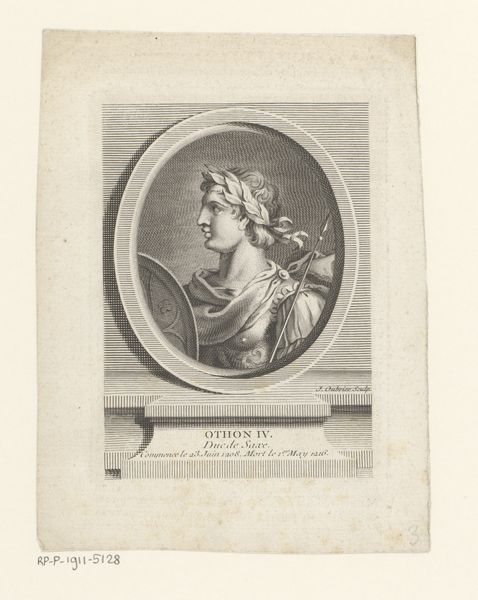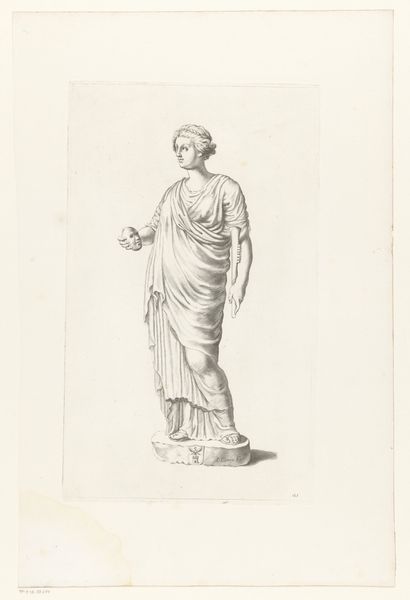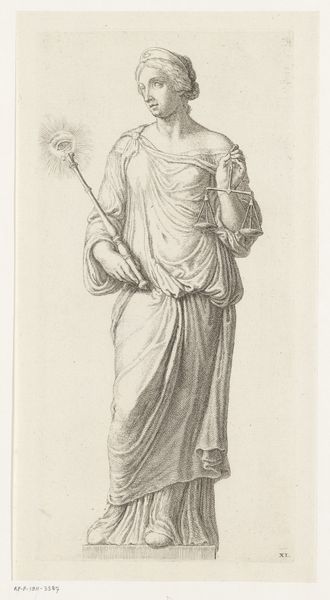
engraving
#
neoclacissism
#
allegory
#
classical-realism
#
figuration
#
portrait reference
#
animal drawing portrait
#
portrait drawing
#
history-painting
#
engraving
Dimensions: height 374 mm, width 274 mm
Copyright: Rijks Museum: Open Domain
Jean Prud'hon created this print, titled "Handel," sometime around 1778. This allegorical figure of commerce is, at first glance, a straightforward celebration of trade, but its classical style speaks volumes about the social and cultural aspirations of its time. Commerce is shown as a partially nude Greco-Roman god wearing a toga, next to a caduceus: the staff of Hermes, messenger of the gods and patron of merchants. Note that the French title, "Le Commerce," gives this figure masculine attributes. France in the late 18th century was on the cusp of revolution. Prud'hon's neoclassical style, which emulates the art of antiquity, was in vogue because it was seen as embodying the ideals of reason, order, and civic virtue – values that the French revolutionaries sought to emulate. But who was this artwork really for? Was it an attempt to ennoble the merchant class, or a subtle critique of the aristocracy's decadence? The answers can be found in the archives. Auction catalogs, private correspondence, and the records of artistic academies and institutions could reveal the social networks that gave this image meaning, and what role the image played in the debates of the time.
Comments
No comments
Be the first to comment and join the conversation on the ultimate creative platform.
